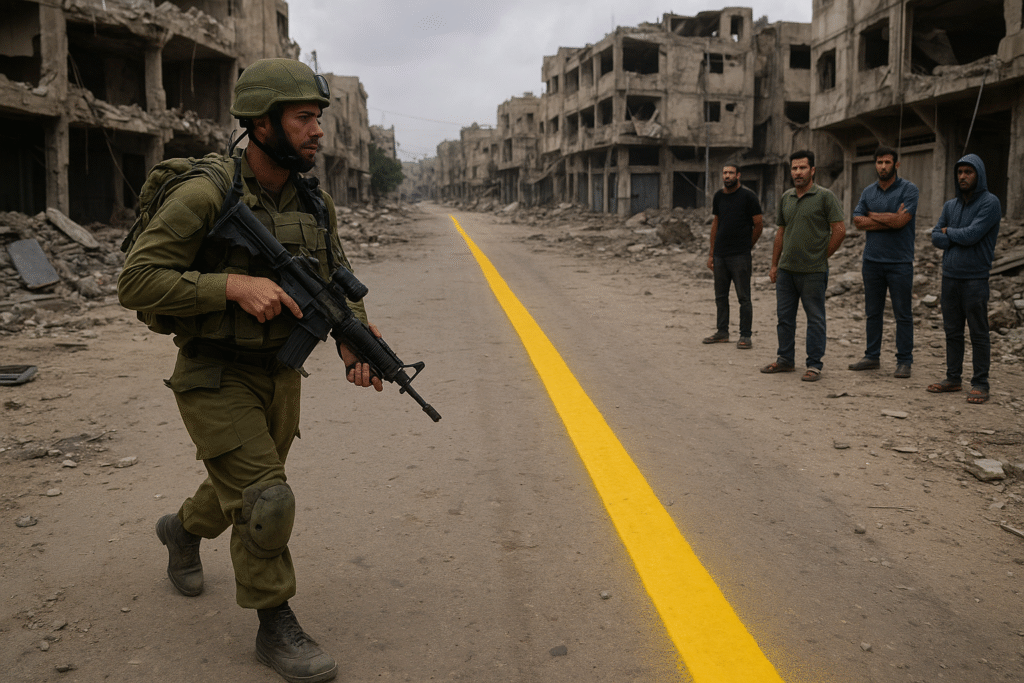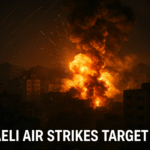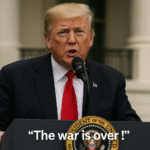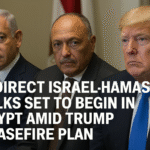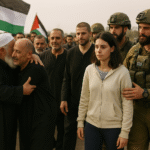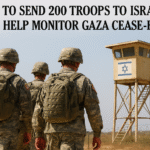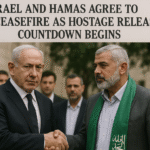By Harshit, Gaza Strip | October 20, 2025
Israel has begun placing physical markers along the “yellow line,” which denotes the area Israeli forces agreed to withdraw to under the first phase of the US-brokered ceasefire. The move follows orders from Defence Minister Israel Katz and comes amid reports that Israeli troops opened fire on individuals who crossed the line, citing “an immediate threat” to soldiers.
Hamas Allegedly Crosses Yellow Line
Israel’s foreign ministry said Hamas forces crossed the yellow line twice in the Shujaiya area of northern Gaza, following a coordinated attack in which two Israeli soldiers were killed. “Israel will always act to protect its civilians and soldiers against any threat,” the ministry stated. Hamas, however, claimed it was “unaware” of any clashes in the area under Israeli control.
Phase Two of Trump’s Gaza Plan
The ceasefire truce, brokered ten days ago as part of President Donald Trump’s peace plan, now faces a critical next step: governance of the Gaza Strip. The plan envisions a temporary transitional government led by a technocratic, apolitical Palestinian committee responsible for public services and municipal management. Oversight would come from an international body, the “Board of Peace,” chaired by President Trump and including former UK Prime Minister Tony Blair.
US officials, including Special Envoy Steve Witkoff and Jared Kushner, have arrived in Israel to discuss phase two with Prime Minister Benjamin Netanyahu and US Vice-President JD Vance, who is expected to visit on Tuesday. Despite the ceasefire, they are working to shore up existing agreements while clarifying details on the governance of Gaza and the disarmament of Hamas.
Humanitarian Situation in Gaza
Aid deliveries to Gaza have resumed, although the volume remains far below needs, according to UN Palestinian refugee agency UNRWA. Acting Director Sam Rose highlighted bureaucratic restrictions and limitations on international NGOs, including British organizations, which are currently prevented from bringing critical supplies such as educational materials and temporary housing.
Israel has reopened two crossings—Kerem Shalom in the far southeast and Kissufim in central Gaza—after temporarily suspending aid deliveries. However, the Rafah crossing along the Egypt-Gaza border remains closed to the movement of people.
Security and Civilian Concerns
The enforcement of the yellow line underscores ongoing security tensions. Palestinians living near the line, such as residents of Shujaiya, report living under constant fear. Hala Obaid, displaced from her neighborhood, described the area as “very dangerous,” stating that “bullets come at us, sometimes from under our feet and above our tents.”
The Israeli military emphasized that its actions target individuals posing an immediate threat to soldiers, while maintaining that over 50% of Gaza remains under IDF control as part of phase one of the ceasefire.
Hostage Returns and Ongoing Disputes
Hamas has returned two more bodies of Israeli hostages over the weekend, including Sonthaya Akrasri, a Thai agricultural worker, and Ronen Engel, a photographer killed in the October 2023 attacks. Sixteen bodies remain unreturned, fueling tensions between Israel and Hamas. Israel has pledged assistance to the families of deceased hostages, including Akrasri’s family in Thailand.
Next Steps and Diplomatic Efforts
With the ceasefire fragile and both sides accusing each other of violations, US officials are working to advance the second phase of the 20-point plan. Key issues remain unresolved: who will govern Gaza, how to ensure Hamas disarms, and how to stabilize the Strip for reconstruction.
President Trump emphasized that the ceasefire will be “handled toughly, but properly,” while US Vice-President JD Vance noted that peace efforts would have “hills and valleys” but remain achievable. As diplomats and mediators work on governance and security measures, the international community continues to monitor Gaza closely, urging both sides to maintain restraint.

